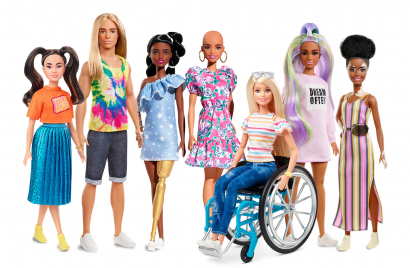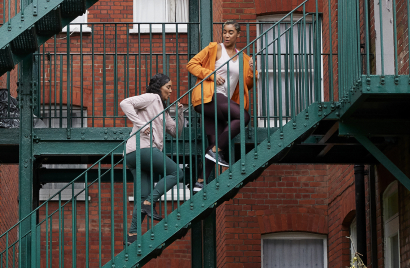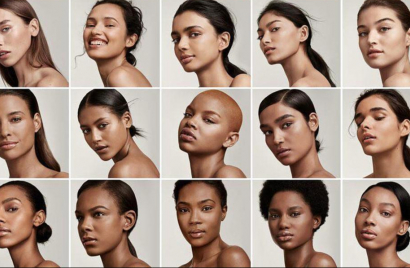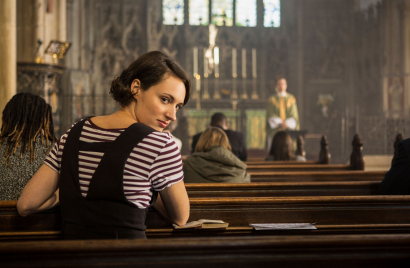
Virgin Media O2 launches summer online safety campaign
Virgin Media O2 and Internet Matters spotlight the importance of having conversations about online safety and starting them early

‘Blood Normal’ was one of the most ground-breaking campaign’s in the history of advertising and proof of what happens when you shift the lens.

Let’s be clear. Advertising is a desire machine.
But for too long it has been a projection of male desire, churning out male aspirations and masquerading them as what women want.
The change we are seeing, the change we want to continue to see, is to free ourselves from this, to expand and diversify our own desires, and claim our own agency.
I mean when you look back from the relative safety of 2020, these representations of the past make it painfully obvious the toxicity of seeing your life just through the prism of male desire.
You want to laugh and cry in equal measure.
Skinny, booby models in white jeans roller-blading along the beach, splashing blue liquid.
It’s almost like the past created a sanitised, impossible version of women that ended up being at odds with actually being a woman. It can only ever have been for the benefit of meeting male expectations.
It’s almost like the past created a sanitised, impossible version of women that ended up being at odds with actually being a woman.
Nadja Lossgott
And all those women in 50s kitchens? Were they really only dreaming of the new oven? Of being a good housewife? Of “being happier with a Hoover”? Most certainly not. That was men deciding what female aspirations should be.
And looking back at the ads, fashion and culture from the 90s and early 2000s, the stuff I mainlined as a girl, shocked me to see the unhealthy, anorexic, hyper-sexualised ideal that was set for me and how it trapped me and shaped my own low self-esteem and horrendous body confidence.
And it’s not just me. This imposed vision of desire and aspiration isolates us. Suppressing our real experiences and desires harms us. Journalist Peggy Orenstein in her book Girls & Sex, wrote how young women when asked about how they felt about their relationship experiences tended to answer with descriptions of how they looked: “I have to remind them that looking good is not a feeling.” This self-objectification has been associated with depression, reduced cognitive function, eating disorders, and, ironically, reduced sexual pleasure.
But then came along one of my first light-bulb moments of how different things could be, how women could be represented. Sofia Coppola’s Lost in Translation. It was the first time I had seen the undeniable presence of the female gaze. It was refreshing, the visual language was beautifully soft, interesting and understanding.


Barbie // Sport England, 'This Girl Can' by FCB Inferno
So, in advertising, who is doing it well? Who is pointing the way? Who is rebalancing, expanding, diversifying our aspirations?
Dove’s Real Beauty campaign has been setting the standard for so long, from their first Evolution billboard right to their recent #ShowUs Project with Getty Images and Girlgaze that diversifies stock imagery.
For a very long time the male oriented desire that every inch of our body should be smoothly shaved was assumed to be women’s desires too. And then Billie, the razor brand came out with their ad in 2019 showing body hair, yes including toes and moustaches, and every woman breathed a sigh of relief. P&G has come looking to buy the brand, and this after a $35 million cash injection from Wall Street.
Between 2012 and 2014 Barbie’s sales dropped almost 20%. And it’s not hard to guess why. Unrealistic body. Terrible career options. And then they overhauled their range. Parents can now snap up a judge, a news anchor, an astronaut, entomologist, builder, beekeeper and buy them in physically diverse ways too, different body sizes, body types, skin tones, hair styles. Diversifying desire, diversifying aspiration is paying off. Sales are up. Barbie is back.
This Girl Can dismantled the idea of the “sexy warrior athlete” and accessed a majority of women with beautiful empathy, appealing to not on how they could look if they exercised, but how they could feel.
And then even Old Spice. Yes, even a dude’s deodorant. Brilliantly subverting the framing of the idea away from male desire to female desire, “the man your man could smell like”. It’s proof that everyone is invited to participate. And proof that subverting tropes, going beyond binary views of the world, breaking free of stereotypical thinking is the engine of brilliant creativity.
Subverting tropes, going beyond binary views of the world, breaking free of stereotypical thinking is the engine of brilliant creativity.
Nadja Lossgott
All of these are doing it right in their own way. Avoiding the pitfalls of patronising “brandsplaining”. Approaching the problem with authentic, true insights and execution.
Bodyform’s Bloodnormal and Viva La Vulva have detonated a massive red bomb and a vulva-shaped grenade against the male view of the world. For both campaigns, the successful battle with media owners showed that you can push against so-called decency i.e. sparing men’s blushes to do the right thing for women’s wellbeing. Because we don’t bleed blue. Or aspire to porn-star vaginas.
And in culture some of the best and most exciting voices in film and TV like Phoebe Waller Bridge and Greta Gerwig are both hysterically funny as well as poignant. There is no ideal to be held to. The desire is just to be who I am. Rihanna and her Fenty line. FKA twigs.
The fruits of evolving desire, of making it bigger than just a singular view, of opening up to new representations, and new ideas are visible for everyone to see.
Let’s keep feeding the desire machine with the ideas and aspirations from a more diverse, non-binary set of people.
What do women want? In this case, this woman sometimes just wants to sit in her pants reading a good book.
Is representation better? Yes. Is there still work to do? Absofuckinglutely.


Fenty Beauty // Phoebe Waller-Bridge as Fleabag
Nadja Lossgott together with her writer, Nicholas Hulley are the ECDs at AMV BBDO in London.They have won multiple Grand Prix’s at Cannes and other international award shows, both as Creatives and as Creative Directors. They are also the proud owners of a D&AD black pencil and have their work in the permanent collections of both the Design Museum and The British Museum. Nick and Nadja created #Bloodnormal, a campaign for Bodyform/Libresse that normalises periods. It made normality revolutionary by being the first campaign in ad history to show period blood instead of blue liquid.They Creative Directed the Trash Isles in partnership with LadBible and Plastic Oceans Project. It declared the world's largest trash patch in the ocean an official country. In a declining beer market their work for Guinness helped put the brand back into positive growth for the first time in years. “Sapeurs” was one of the most awarded film campaigns in the world the year of launch. They now run the account globally. Previously, they were part of the team that made the multi-award winning Zimbabwean Newspaper "Trillion Dollar” campaign. Nadja has been named as The One Club's 10 “Next Creative Leaders" and Campaign's "Women of Tomorrow" that recognises female talent. The team have judged at international award shows like D&AD, Cannes and One Show. Outside of work, Nicholas enjoys the soul-crushing futility of trying to get a golf ball into a hole and Nadja tried to keep plants alive long enough to feel good about herself.
Looks like you need to create a Creativebrief account to perform this action.
Create account Sign inLooks like you need to create a Creativebrief account to perform this action.
Create account Sign in